You are using an out of date browser. It may not display this or other websites correctly.
You should upgrade or use an alternative browser.
You should upgrade or use an alternative browser.
Pro-Rig V2.0 - Home Built Compact Composite Pop-up
- Thread starter CoyoteThistle
- Start date
IIRC, I never could find exactly what the "Lithium setting" on the REDARC meant exactly in terms of charging profile. But, if you are seeing the charge rate drop to zero when the battery gets to 14.x volts, that's a good sign. The next good sign would be to watch the battery voltage after it stops charging (with little or no loads). It should settle down to between about 13.3 and 13.4v (in other words, the resting voltage of a full pack). This would mean that if there is a float charge, it's at a low enough voltage to not be doing any damage. If the battery voltage sits higher than that after bulk charging stops, probably means there is some float charging going on. Yes, I think the jury is out on weather float charging at, say 13.6v is bad or not. Definitely bad to float in the mid 14 volt range. That is what will start to eat away at your capacity. Either way, this battery chemistry just does not need float charging so it's best to have a system that just doesn't do it.
I wouldn't worry about doing full charge and discharge, my understanding is that Lithiums are very happy to rarely if ever go in the tail ends of their capacity.
Hadn't heard of Revolution Power. First firm I've seen selling self-contained lithium to admit that you do in fact need a different charge profile than lead acid. So, kudos to them!
Thanks for the feedback, looks like I'm in good shape. When I started down this road a couple years ago, there wasn't near the information now available on drop ins. This forum is a great resource to share knowledge and experience. I can understand the ignorance and appreciate "pet peeves" of some, however I would hope they appreciate the sharing of knowledge and not be so quick to criticize. I'm definitely not as techy as I used to be with the constant growth of the industry, but when I come across something worth sharing, I do. I realize that some prefer to stay in their comfort zone. If they prefer to watch black and white TV, that's cool. Who am I to judge
Justin Cook
Member
Yeah, in San Diego now - actually just moved here about 8 months ago from CO, where I had been working as a Victron systems consultant and Bay Marine Supply hired me here as their tech support guy. We're near-ish the arena, at Fairmount Ave and Mission Gorge... but be advised we're not a retail location, no showroom, we're literally three desks, a test bench, and a big warehouse.This is a great, well written, informative reply! THANK YOU @Justin Cook
I see you are in San Diego... still? I am as well..
About to start a huge project and would be great to support someone local (and to pick their brain in person)..
Are you at the Bay Marine Supply over there near sports arena?
Picking my brain in person is expensive, I have to warn you - we're by appointment only and time in person is billable, but I'm free out here on the various forums, or shoot me an email at justin@baymarinesupply.com and I can offer advice, component recommendations, and/or put together a system quote for you. We don't do installation or -with some exceptions- design work (though I have developed a fair number of component interaction reference schematics), but if you have a schematic that you need to have looked over we do offer that as a service, and there is a very short list (literally 2 guys) of installers in the area whose work we've seen and trust and feel comfortable recommending to people, so if you need help in developing a comprehensive schematic and/or help with the actual installation, these guys are great and I'm happy to share their contact info - just drop me an email.
Our big thing is technical support, really... you can get Victron components a whole lot of different places, but since all Victron technical support and warranty matters are handled by the dealers and distributors rather than by Victron, it's important to know that your dealer has expert technical support on staff. Our pricing, like everyone's, is based on Victron's set MAP (although we can usually do some degree of package pricing when we get into a full system), but we're the largest stocking distributor in the western US and the most technical distributor in the entirety of the US, so that's how we set ourselves apart from the other dealers/distributors.
Drop me a line anytime, I'm happy to answer questions/make suggestions!
Justin Cook
Member
With all due respect, this is a myth.Full stop. Storing a lithium battery at high SOC causes capacity loss. It is a function of the chemistry.
Although this is an oft-repeated myth and indeed seems to experience a resurgence every couple of years, I'm afraid it's based on an outdated understanding of LFP chemistry. Again, every reputable LFP battery manufacturer currently on the market recommends that batteries must be stored at ~50% SOC or higher; this is partially to compensate for the rate of self-discharge while stored, since nothing at all will destroy an LFP battery faster than an extended period of time at a low SOC. I suspect that this misunderstanding stems from old studies dating back before anybody really understood the LFP chemistry... or it's based on data taken from electric car studies, but those use LTO/NCO battery chemistries, which are vastly different beasts altogether and have their own pros and cons.
From Battle Born:
"Storage could not be easier simply charge the batteries fully and disconnect from any charge or discharge." https://battlebornbatteries.com/wp-content/uploads/2016/08/Battle-Born-Manual.pdf
From LiFeBlue:
"Discharge battery to 50% SoC before long term storage of more than 30 days. Check battery voltage every 60 days and recharge if below 13.0 volts." https://www.lifebluebattery.com/ewE...nd Install guidlines - LiFeBlue Battery-1.pdf
Victron recommends their SuperPack (their LFP drop-ins) be stored fully charged: https://www.victronenergy.com/upload/documents/Datasheet-12,8V-&-25,6-Lithium-SuperPack-EN.pdf
AIMS recommends storing at 50%: https://www.aimscorp.net/documents/LFPBattery Manual 3-26-2019.pdf
...I could go on, but the point is that the myth of an LFP cell losing capacity when stored at 100% SOC isn't supported by a current understanding of how the chemistry works and performs over the long term.
luthj
Engineer In Residence
...I could go on, but the point is that the myth of an LFP cell losing capacity when stored at 100% SOC isn't supported by a current understanding of how the chemistry works and performs over the long term.
The quoted manuals directly contradict your statement though. They specifically state to discharge before storage. If sitting full doesn't harm the pack, then why do that? I am not saying its catastrophic, but if you are looking to get 10 years from a pack, the extra 1-4% per year makes a difference. If a drop-in pack has a poorly designed BMS, its possible for the BMS to drain the pack beyond the safe threshold, and cause anode breakdown and voltage reversal. That is likely why many drop in makers suggest staying above 50% SOC. The research indicates that the degradation rate is pretty constant between 40-70% SOC, significant reduction occurs below 40% SOC, so anywhere between 40-70% going to have similar results. Now obviously cell/electrolyte designs have been improving, so the degradation rate may be lower with newer packs, but I have not seen any testing to show a huge change in the last few years.
Sitting at low SOC causes no harm to the pack (unlike lead). The only time damage would occur is if the cells are taken past zero SOC into the voltage reversal and breakdown territory. Anything above this is fine. Technically there is a bit more cycle loss when using the last 5% or so, of the packs capacity, but since most drop-ins have no issue using it, I don't think its worth worrying about.
Those drop in MFGs have various reasons for their choices in those cases. I don't have time to post the relevant studies, but detailed work has been done showing the degradation of the anode and electrolyte from extended storage at high SOC. This is why almost every cell maker that supplies raw cells to MFGs provides them at partial SOC. Lots of great reading over here. https://marinehowto.com/lifepo4-batteries-on-boats/
The data shows that the lower the SOC, the slower the degradation. This is by neutral third parties testing cells. Even storing at nearly zero SOC is okay, as long as the BMS completely shuts down (not all do). If there is a true zero drain, storing at 10% SOC in mild temps is acceptable for as much as 2 years, before light top off back to 10% is suggested.
Anyways, I don't wan't to start a flame ware in this thread. If you would like to come over to the 12v/power subforum there is some great materials scattered about.
Last edited:
RAM5500 CAMPERTHING
OG Portal Member #183
Yeah, in San Diego now - actually just moved here about 8 months ago from CO, where I had been working as a Victron systems consultant and Bay Marine Supply hired me here as their tech support guy. We're near-ish the arena, at Fairmount Ave and Mission Gorge... but be advised we're not a retail location, no showroom, we're literally three desks, a test bench, and a big warehouse.
Picking my brain in person is expensive, I have to warn you - we're by appointment only and time in person is billable, but I'm free out here on the various forums, or shoot me an email at justin@baymarinesupply.com and I can offer advice, component recommendations, and/or put together a system quote for you. We don't do installation or -with some exceptions- design work (though I have developed a fair number of component interaction reference schematics), but if you have a schematic that you need to have looked over we do offer that as a service, and there is a very short list (literally 2 guys) of installers in the area whose work we've seen and trust and feel comfortable recommending to people, so if you need help in developing a comprehensive schematic and/or help with the actual installation, these guys are great and I'm happy to share their contact info - just drop me an email.
Our big thing is technical support, really... you can get Victron components a whole lot of different places, but since all Victron technical support and warranty matters are handled by the dealers and distributors rather than by Victron, it's important to know that your dealer has expert technical support on staff. Our pricing, like everyone's, is based on Victron's set MAP (although we can usually do some degree of package pricing when we get into a full system), but we're the largest stocking distributor in the western US and the most technical distributor in the entirety of the US, so that's how we set ourselves apart from the other dealers/distributors.
Drop me a line anytime, I'm happy to answer questions/make suggestions!
Thanks. I’ll shoot ya an email when I’m ready to pull the trigger. I’ll probably do most of it at once!
Been a victim user/fan for awhile
Justin Cook
Member
Haha fair enough... agree to disagree on this one (though, one note: two of the manuals I quoted say store at 100%, two say at 50% - just for the record). I see that marine how-to article quoted a fair bit without regard to exactly how dated those articles are... but I'll leave the argument off hereThe quoted manuals directly contradict your statement though. They specifically state to discharge before storage. If sitting full doesn't harm the pack, then why do that? I am not saying its catastrophic, but if you are looking to get 10 years from a pack, the extra 1-4% per year makes a difference. If a drop-in pack has a poorly designed BMS, its possible for the BMS to drain the pack beyond the safe threshold, and cause anode breakdown and voltage reversal. That is likely why many drop in makers suggest staying above 50% SOC. The research indicates that the degradation rate is pretty constant between 40-70% SOC, significant reduction occurs below 40% SOC, so anywhere between 40-70% going to have similar results. Now obviously cell/electrolyte designs have been improving, so the degradation rate may be lower with newer packs, but I have not seen any testing to show a huge change in the last few years.
Sitting at low SOC causes no harm to the pack (unlike lead). The only time damage would occur is if the cells are taken past zero SOC into the voltage reversal and breakdown territory. Anything above this is fine. Technically there is a bit more cycle loss when using the last 5% or so, of the packs capacity, but since most drop-ins have no issue using it, I don't think its worth worrying about.
Those drop in MFGs have various reasons for their choices in those cases. I don't have time to post the relevant studies, but detailed work has been done showing the degradation of the anode and electrolyte from extended storage at high SOC. This is why almost every cell maker that supplies raw cells to MFGs provides them at partial SOC. Lots of great reading over here. https://marinehowto.com/lifepo4-batteries-on-boats/
The data shows that the lower the SOC, the slower the degradation. This is by neutral third parties testing cells. Even storing at nearly zero SOC is okay, as long as the BMS completely shuts down (not all do). If there is a true zero drain, storing at 10% SOC in mild temps is acceptable for as much as 2 years, before light top off back to 10% is suggested.
Anyways, I don't wan't to start a flame ware in this thread. If you would like to come over to the 12v/power subforum there is some great materials scattered about.
ExpoMike
Well-known member
Yeah, in San Diego now - actually just moved here about 8 months ago from CO, where I had been working as a Victron systems consultant and Bay Marine Supply hired me here as their tech support guy. We're near-ish the arena, at Fairmount Ave and Mission Gorge... but be advised we're not a retail location, no showroom, we're literally three desks, a test bench, and a big warehouse.
Picking my brain in person is expensive, I have to warn you - we're by appointment only and time in person is billable, but I'm free out here on the various forums, or shoot me an email at justin@baymarinesupply.com and I can offer advice, component recommendations, and/or put together a system quote for you. We don't do installation or -with some exceptions- design work (though I have developed a fair number of component interaction reference schematics), but if you have a schematic that you need to have looked over we do offer that as a service, and there is a very short list (literally 2 guys) of installers in the area whose work we've seen and trust and feel comfortable recommending to people, so if you need help in developing a comprehensive schematic and/or help with the actual installation, these guys are great and I'm happy to share their contact info - just drop me an email.
Our big thing is technical support, really... you can get Victron components a whole lot of different places, but since all Victron technical support and warranty matters are handled by the dealers and distributors rather than by Victron, it's important to know that your dealer has expert technical support on staff. Our pricing, like everyone's, is based on Victron's set MAP (although we can usually do some degree of package pricing when we get into a full system), but we're the largest stocking distributor in the western US and the most technical distributor in the entirety of the US, so that's how we set ourselves apart from the other dealers/distributors.
Drop me a line anytime, I'm happy to answer questions/make suggestions!
Hi @Justin Cook That's a lot of good info. I actually looked up your address on Google maps and looked at the street view and didn't see a storefront showroom. I was bummed as I love to be able to see what I am buying in person, when it is local to me (I am in San Diego). I am in the early stages of planning and good to know you guys have a lot of the high quality build items I will likely need. Will definitely reach out when ready.
Justin Cook
Member
Yeah man, definitely do! Our location is (deliberately) the single one you can't see in Street View because it's hidden behind a row of concrete columnsHi @Justin Cook That's a lot of good info. I actually looked up your address on Google maps and looked at the street view and didn't see a storefront showroom. I was bummed as I love to be able to see what I am buying in person, when it is local to me (I am in San Diego). I am in the early stages of planning and good to know you guys have a lot of the high quality build items I will likely need. Will definitely reach out when ready.
CoyoteThistle
Adventurer
Been testing my new mounting anchor points for the rear. On the old truck, I had turnbuckles going to anchor points on the bumper. I never liked this much since the Frontier bumper, while steel, really isn't that stout. So, here's what I came up with:
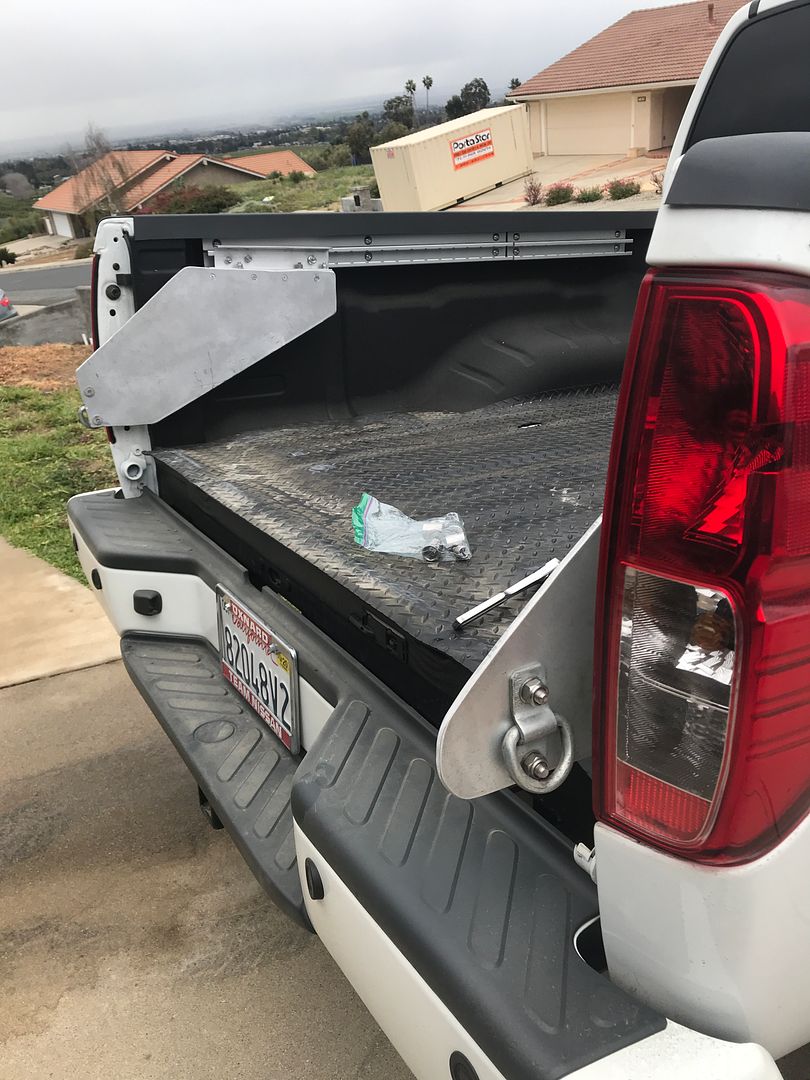
As usual, I'm using aluminum. It's 1/4" plate bolted to the utility track rails. Turnbuckles anchor the camper to the D-rings. The whole thing is connected with these little doohickeys:
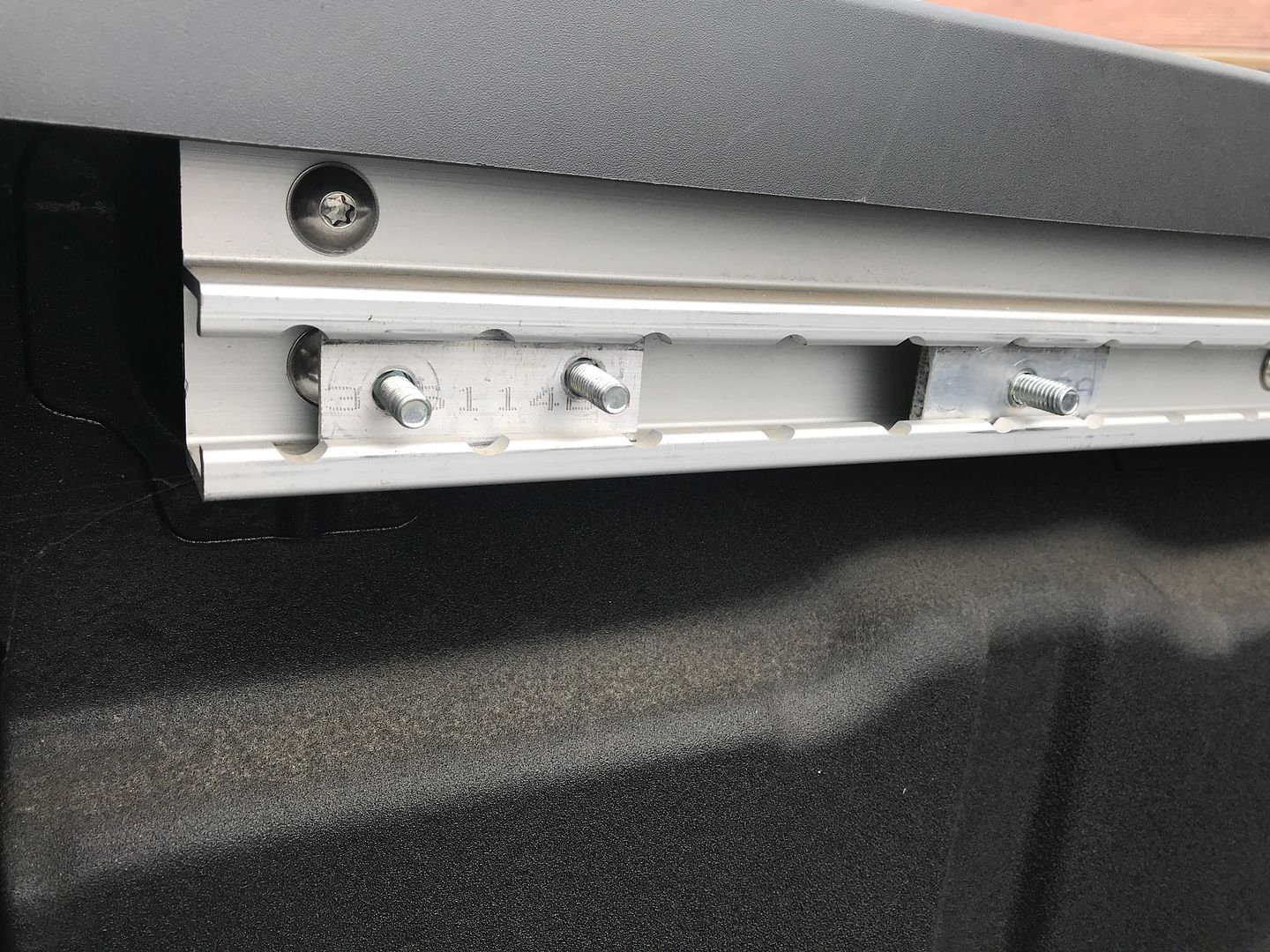
There seems to be very good vertical strength to the system. The mounts can wiggle horizontally but the clearance between these and the camper is about 3/4" (vs. 1-1/4" before) so not much movement in real life. The even tighter fit makes loading the camper more tedious, but it's still doable.
First test was a trip just up the Gaviota coast for an overnighter and no rough roads. Neat to see some local sights and trails that we've never bothered to see, like a nice hike up to some sandstone caves.
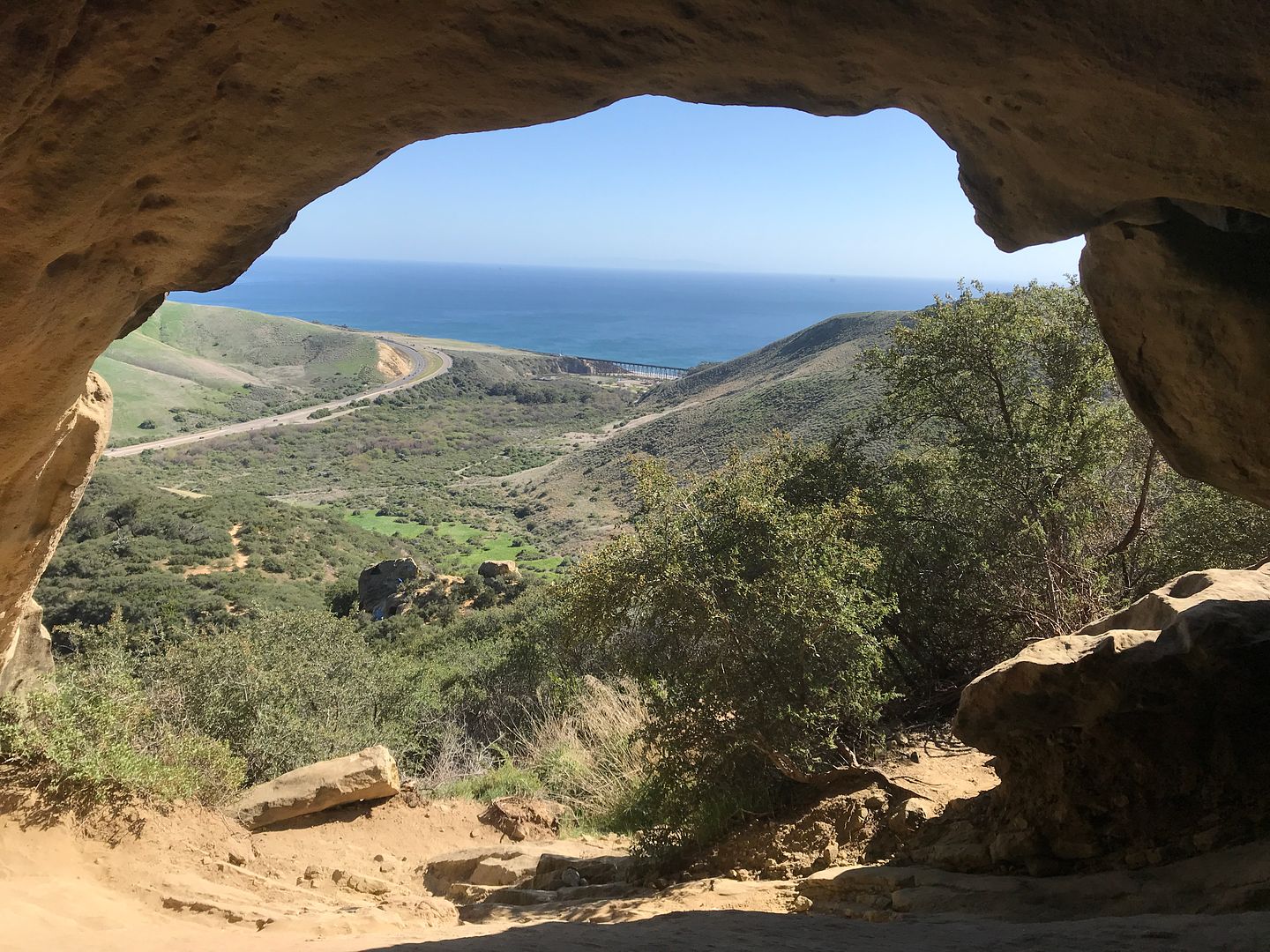
All worked well so last weekend we headed out to the Mojave National Preserve to see some sights and try things out on some rougher roads. Got out of town Friday AM but managed to encounter two complete freeway closures (I-5 and I-15) due to crashes. Sheri navigated around the chaos and we reaches our final fuel-up at Baker by early afternoon. First stop was a neat lava tube. Sheri is enjoying it
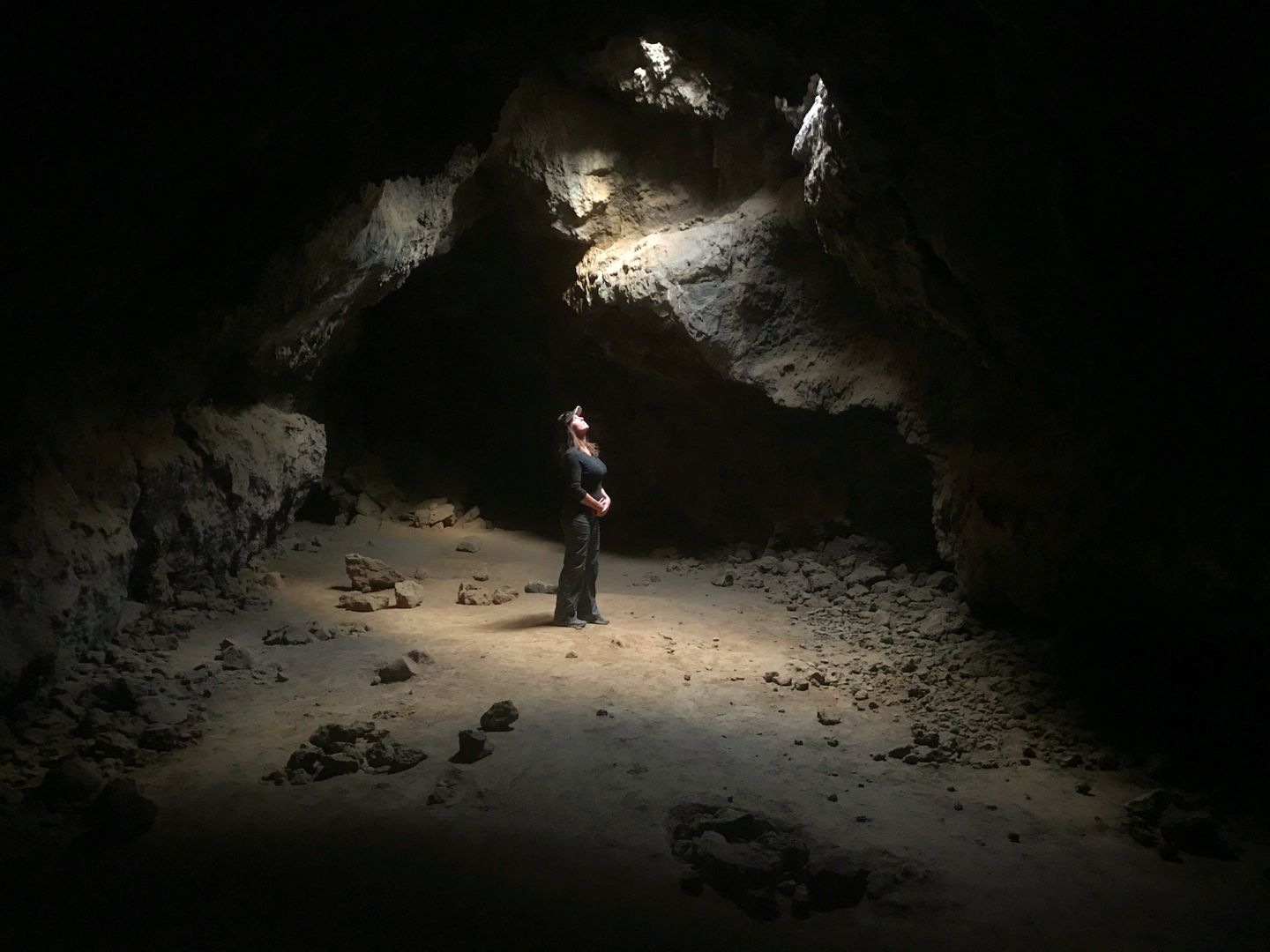
A good test of the mounting system on washboard and a little section of 4wd all went well. Climbed up to Aiken Mine as the sun set
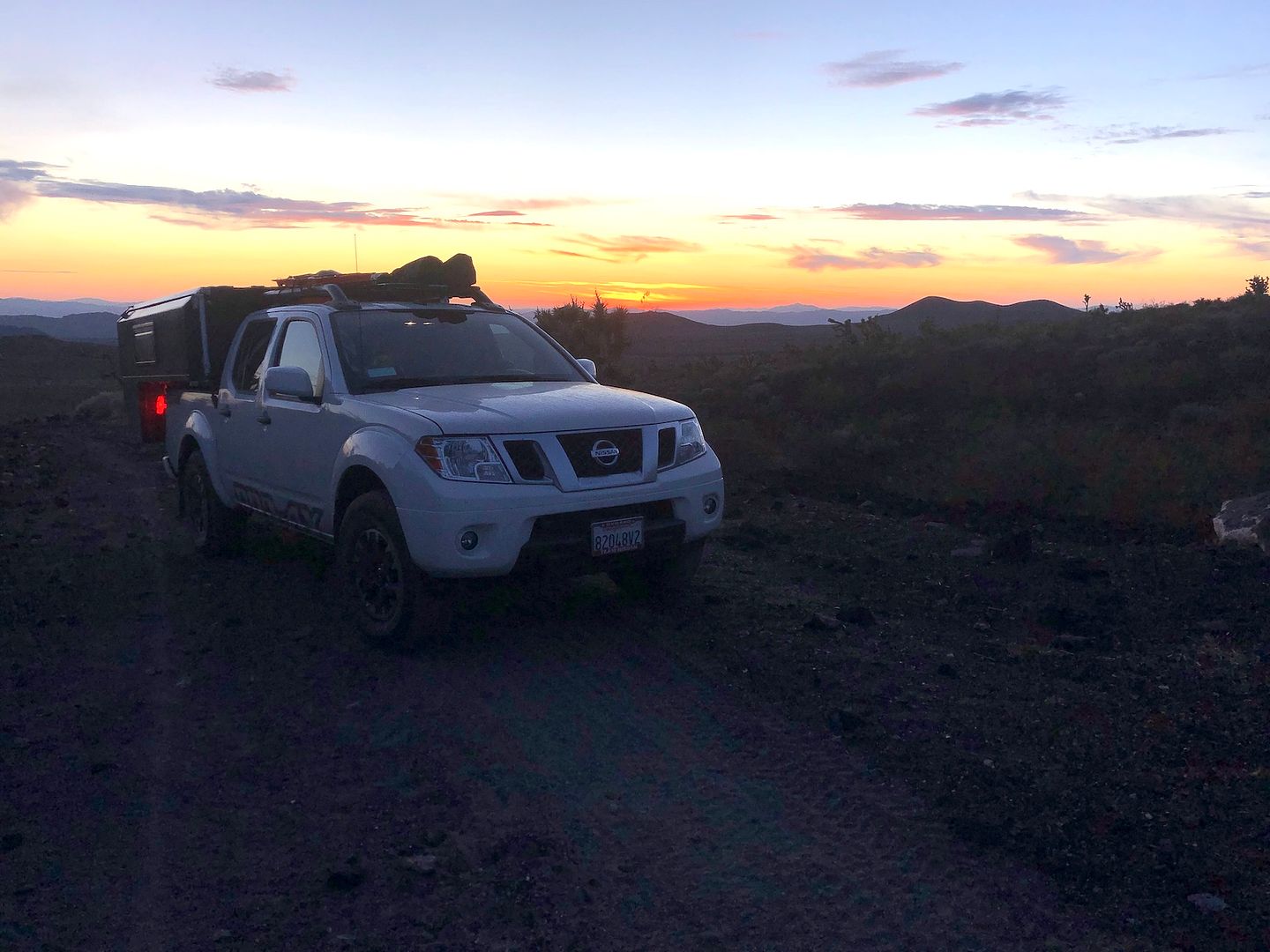
Found a nice little camp just before dark and settled in to dinner and a nice camp fire. Morning brought a first test of new pieces of kit
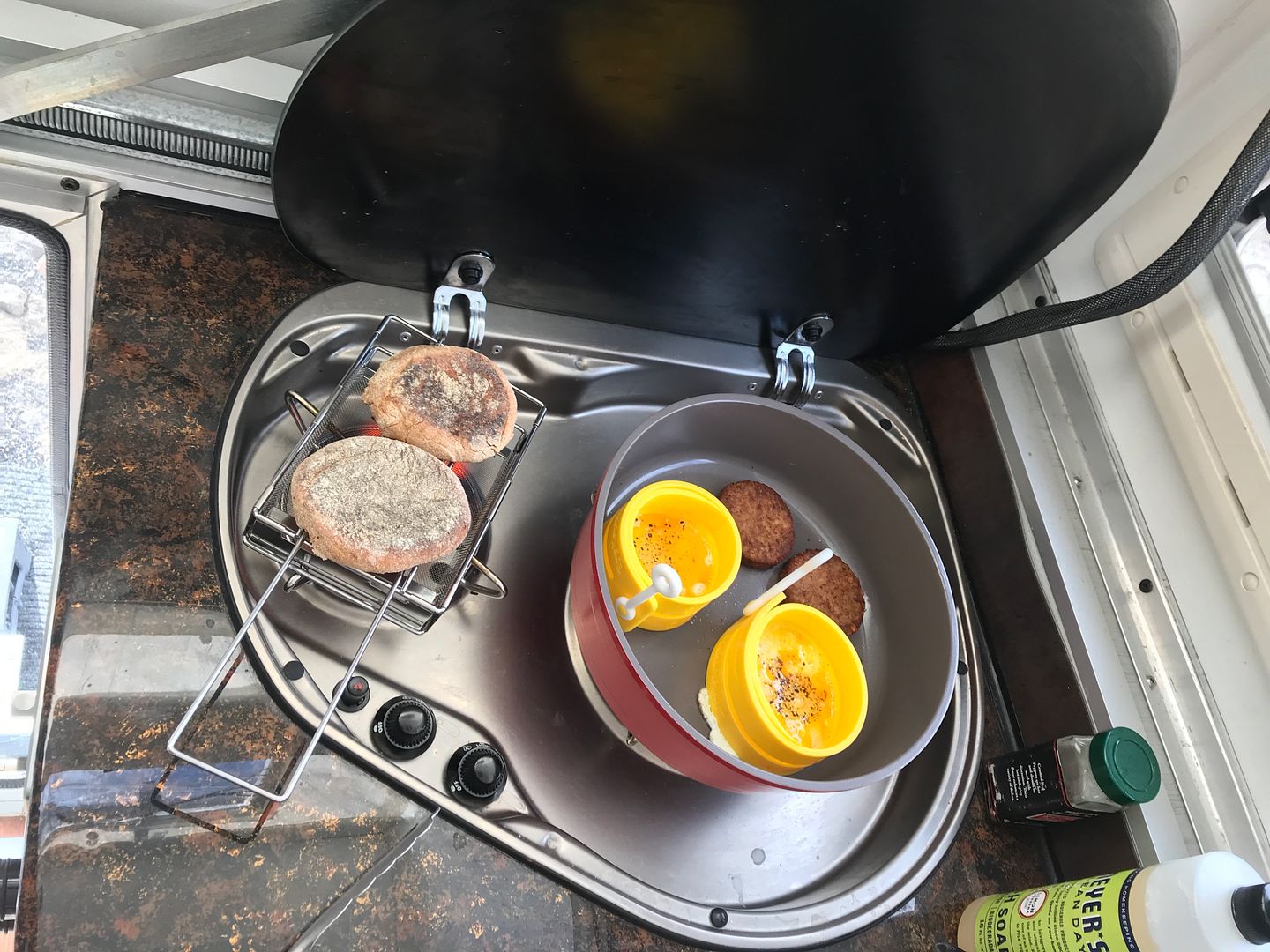
On the left is our new "toaster". It's a GSI piece that folds flat and did a nice job of getting a little toastyness in to the bread. On the right are some silicone rings that make your fried egg nice and round. Worked like a charm. The result:

Good stuff!
Rolled out of camp and worked our way across the desert, geeking out on birds and flowers. Did a nice hike up to Teutonia Peak to earn some nice views

Next up was an attempt at Macedonia Road. The road starts from the south by passing under a railroad bridge, it's pretty low.
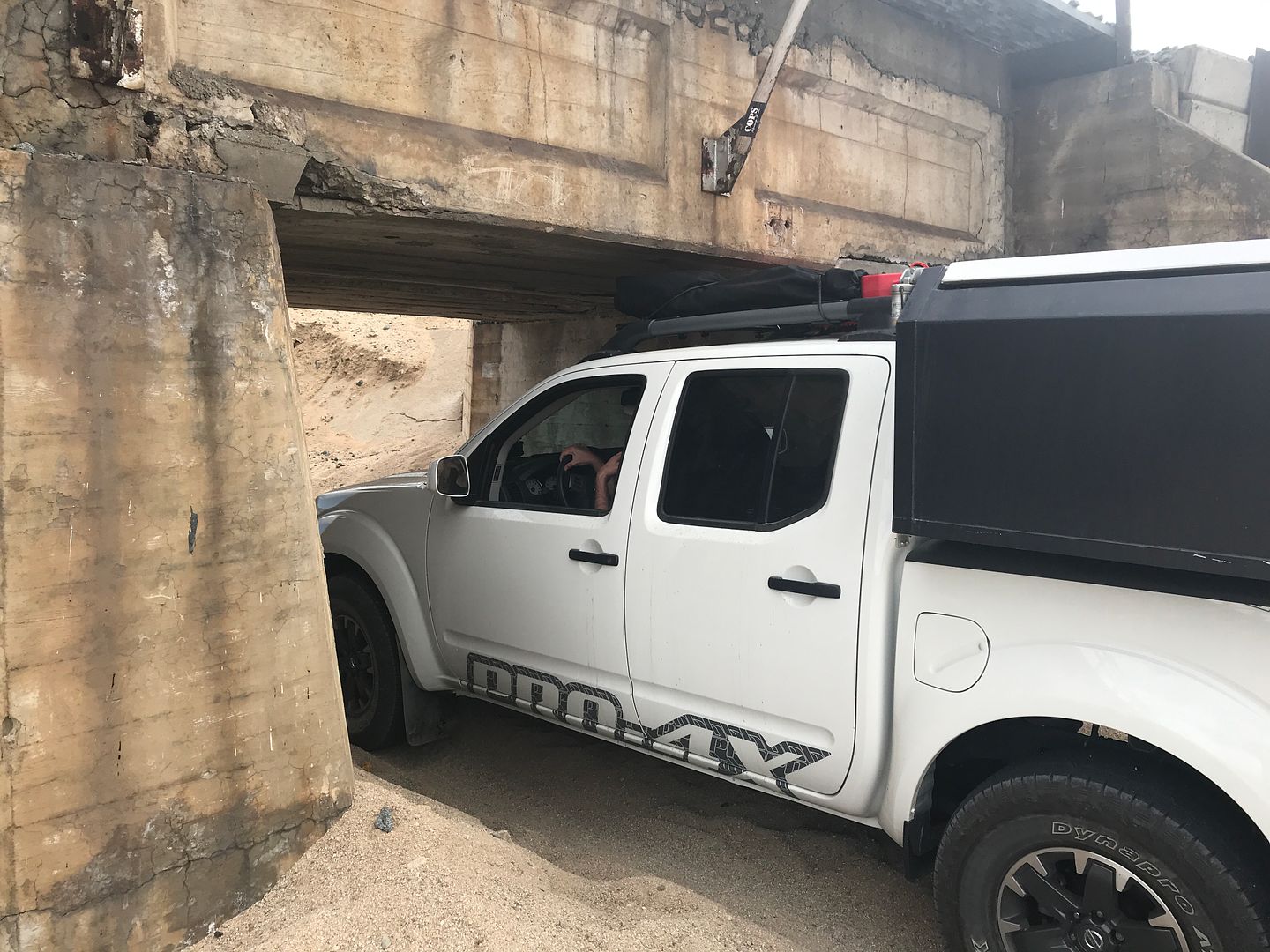
Pro-Rig almost made it under. Could have deployed the shovel and dug down or let air out of the airbags I guess, but we bailed and headed back round the long way to Wild Horse Canyon Road. This lead us to Hole In The Rock Campground just as the sun was setting.
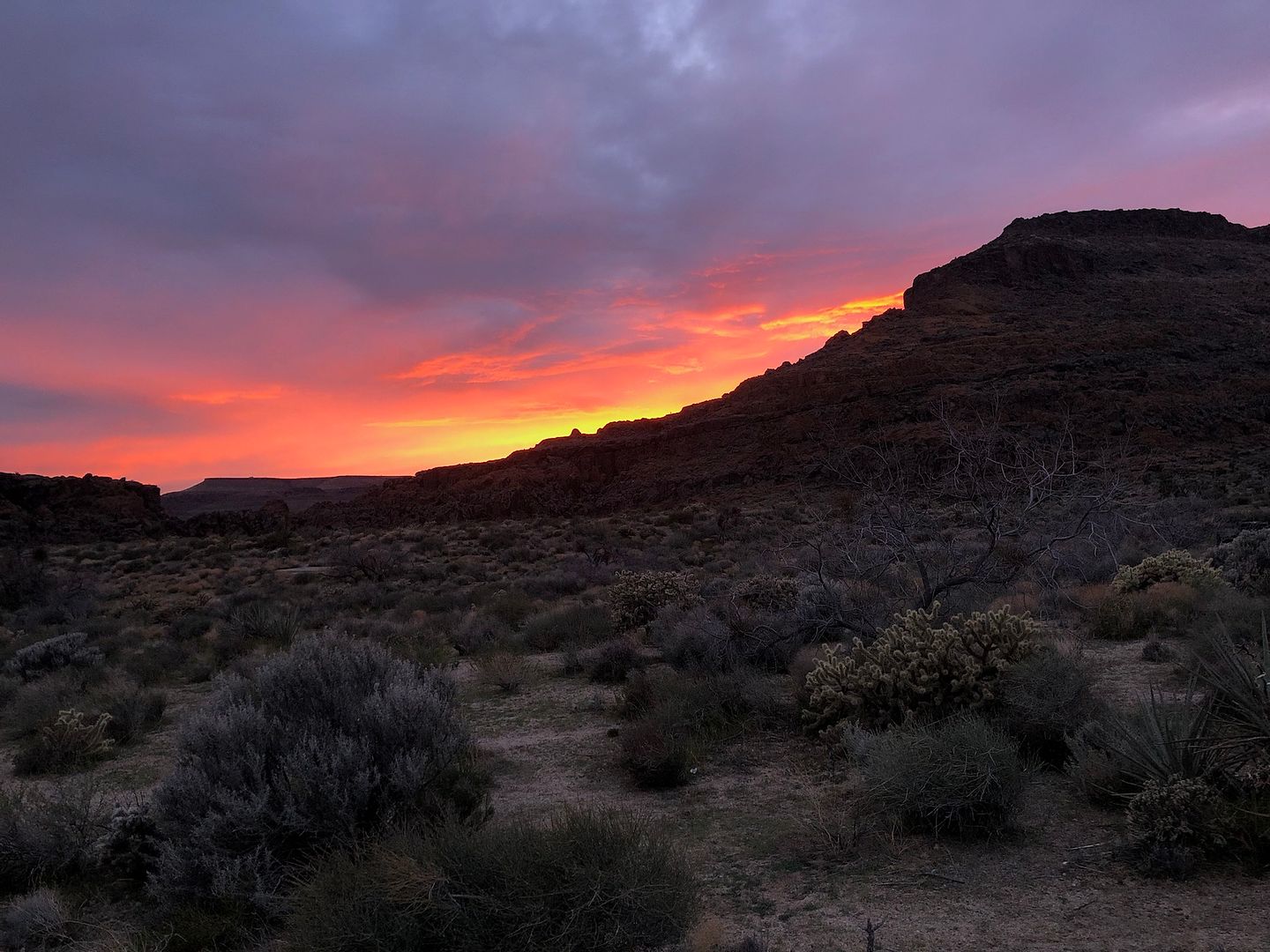
Campground was almost full, not our style, but we decided to stay instead of searching for a dispersed site in the falling light. Worked out fine, any generator noise was drowned out by the 30+mph wind all night.
Next day we got a lazy start and headed up to Mitchell Caverns hoping to land a spot on a tour (only way to see the place). 11AM was full but 1PM had space. We did a couple short hikes and saw a few good birds and a desert tortoise before departing on the tour. Turned out to be a good time with some history and geology and neat sights
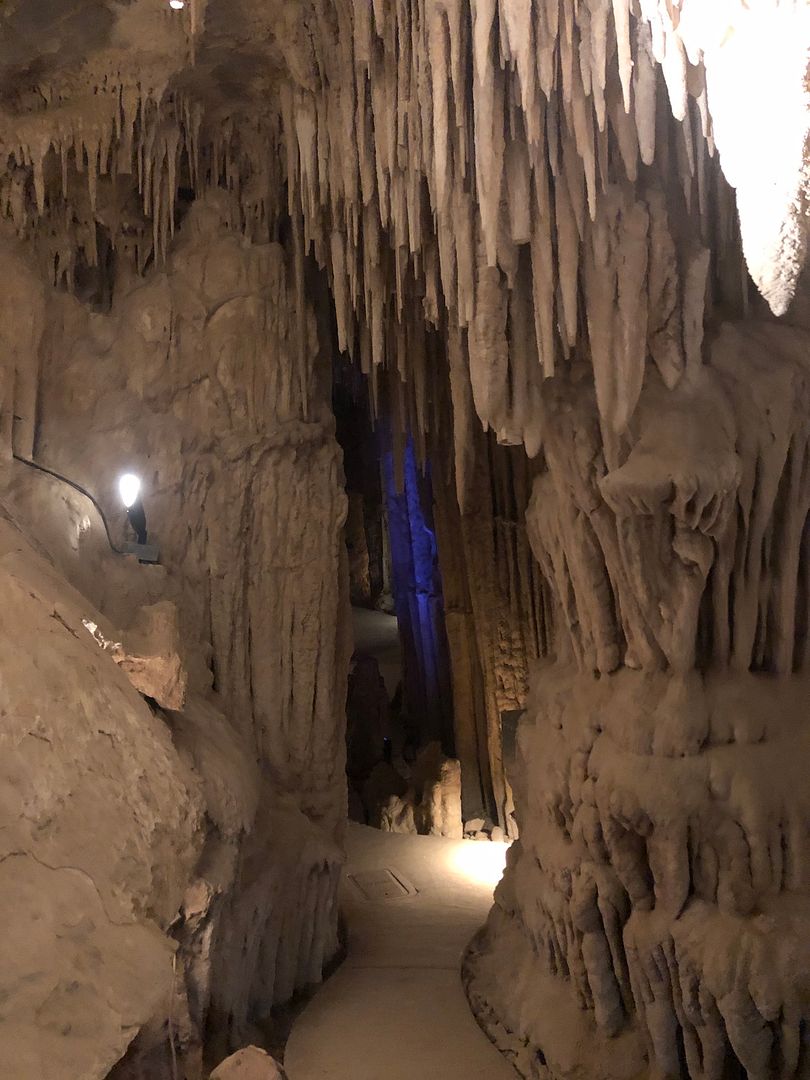
After all that, headed home without incident. New camper anchors seemed to work just fine. Might be worth welding up some of the pieces I bolted together eventually, other than that I think it will work.

As usual, I'm using aluminum. It's 1/4" plate bolted to the utility track rails. Turnbuckles anchor the camper to the D-rings. The whole thing is connected with these little doohickeys:

There seems to be very good vertical strength to the system. The mounts can wiggle horizontally but the clearance between these and the camper is about 3/4" (vs. 1-1/4" before) so not much movement in real life. The even tighter fit makes loading the camper more tedious, but it's still doable.
First test was a trip just up the Gaviota coast for an overnighter and no rough roads. Neat to see some local sights and trails that we've never bothered to see, like a nice hike up to some sandstone caves.

All worked well so last weekend we headed out to the Mojave National Preserve to see some sights and try things out on some rougher roads. Got out of town Friday AM but managed to encounter two complete freeway closures (I-5 and I-15) due to crashes. Sheri navigated around the chaos and we reaches our final fuel-up at Baker by early afternoon. First stop was a neat lava tube. Sheri is enjoying it

A good test of the mounting system on washboard and a little section of 4wd all went well. Climbed up to Aiken Mine as the sun set

Found a nice little camp just before dark and settled in to dinner and a nice camp fire. Morning brought a first test of new pieces of kit

On the left is our new "toaster". It's a GSI piece that folds flat and did a nice job of getting a little toastyness in to the bread. On the right are some silicone rings that make your fried egg nice and round. Worked like a charm. The result:

Good stuff!
Rolled out of camp and worked our way across the desert, geeking out on birds and flowers. Did a nice hike up to Teutonia Peak to earn some nice views

Next up was an attempt at Macedonia Road. The road starts from the south by passing under a railroad bridge, it's pretty low.

Pro-Rig almost made it under. Could have deployed the shovel and dug down or let air out of the airbags I guess, but we bailed and headed back round the long way to Wild Horse Canyon Road. This lead us to Hole In The Rock Campground just as the sun was setting.

Campground was almost full, not our style, but we decided to stay instead of searching for a dispersed site in the falling light. Worked out fine, any generator noise was drowned out by the 30+mph wind all night.
Next day we got a lazy start and headed up to Mitchell Caverns hoping to land a spot on a tour (only way to see the place). 11AM was full but 1PM had space. We did a couple short hikes and saw a few good birds and a desert tortoise before departing on the tour. Turned out to be a good time with some history and geology and neat sights

After all that, headed home without incident. New camper anchors seemed to work just fine. Might be worth welding up some of the pieces I bolted together eventually, other than that I think it will work.
CoyoteThistle
Adventurer
Thanks man, glad you enjoyed it! I'd seen the Land Rover one, but not the first one. I like what he did for the lifting mechanism - anything that avoids electric actuators is smart. Good luck with you build, hope you start a thread on it and share the fun!
CoyoteThistle
Adventurer
Been a while since I updated anything, but there has been some work on the camper and, actually, some camping! Let's see, got back from our desert trip and were soon immersed, like most of us, into a world ruled by COVID. The camper sat at home, like us, for several months while I tried to make sense of this strange new world. By late June we figured it would be fine to head out for a long weekend of dispersed camping and limit contact with civilization to a couple pay-at-the-pump gas stops.
We decided on Sequoia National Forest in the southern Sierras. We haven't explored too much of this area. It's just a few hours drive from home and has enough elevation that we expect nice temps. We saw most of the campgrounds were closed - good. That should keep most people away. Turned out to be a really great three days. Quiet campsites.
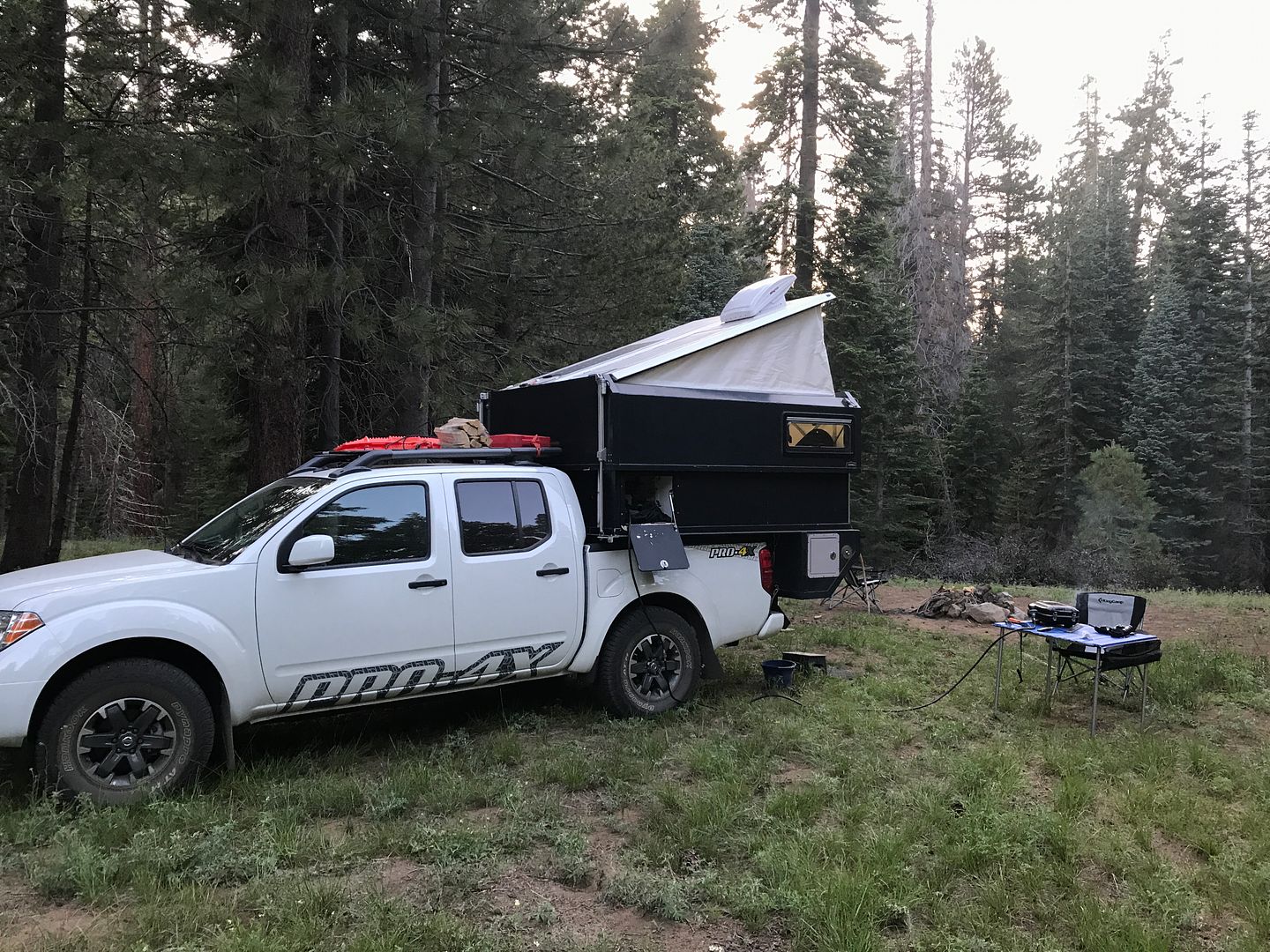
Nice to be up in the pines. Temps were great and the mosquitoes were not too bad.
Grilled up some chicken shawarma and had a Mediterranean feast.

Including the first cucumbers of the year from our new COVID garden
Did a longer-than-planned hike to Slate Mountain. Nice views.

And lots of cool wildflowers int he Slate Mountain Botanical Area.


After the hike Saturday, we started looking for a camp site. All the sites we drove by were occupied. We wandered out random roads to no avail. Finally got on to a pretty beat up road that was not on our maps. Needed a little 4X4 to get out to a very secluded spot Close to a meadow with more flowers.

and some stunning orobanche in the forest.

Lazy start to Sunday and we did a short hike to a fire lookout.

Pretty amazing view towards the Central Valley and Coast Ranges to the west and Mt. Whitney to the east.
Hiked back down and Pro-RIg was waiting for us.
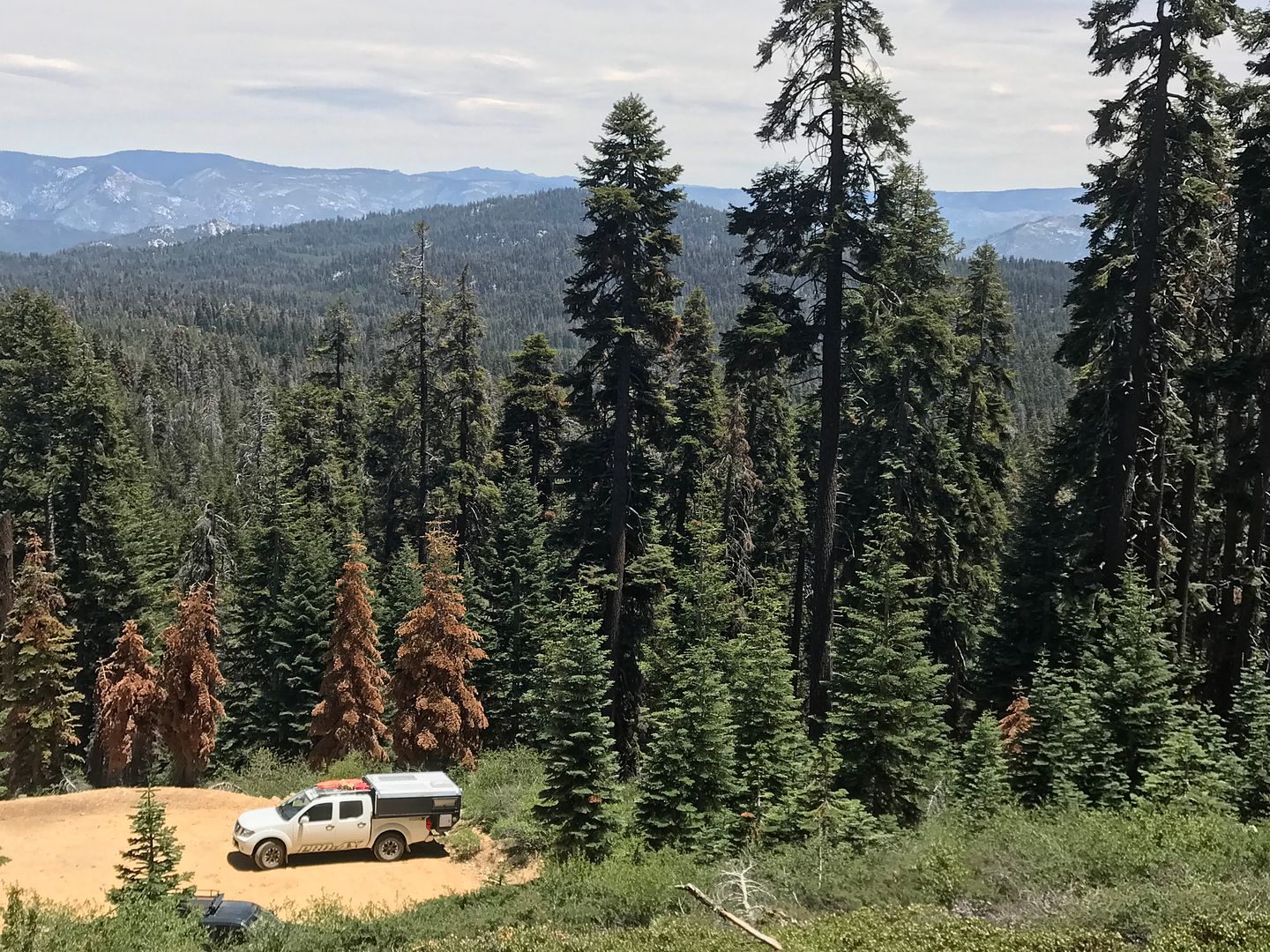
Good trip. Nice to go several hours straight without thinking of viruses and such.
We decided on Sequoia National Forest in the southern Sierras. We haven't explored too much of this area. It's just a few hours drive from home and has enough elevation that we expect nice temps. We saw most of the campgrounds were closed - good. That should keep most people away. Turned out to be a really great three days. Quiet campsites.

Nice to be up in the pines. Temps were great and the mosquitoes were not too bad.
Grilled up some chicken shawarma and had a Mediterranean feast.

Including the first cucumbers of the year from our new COVID garden
Did a longer-than-planned hike to Slate Mountain. Nice views.

And lots of cool wildflowers int he Slate Mountain Botanical Area.


After the hike Saturday, we started looking for a camp site. All the sites we drove by were occupied. We wandered out random roads to no avail. Finally got on to a pretty beat up road that was not on our maps. Needed a little 4X4 to get out to a very secluded spot Close to a meadow with more flowers.

and some stunning orobanche in the forest.

Lazy start to Sunday and we did a short hike to a fire lookout.

Pretty amazing view towards the Central Valley and Coast Ranges to the west and Mt. Whitney to the east.
Hiked back down and Pro-RIg was waiting for us.

Good trip. Nice to go several hours straight without thinking of viruses and such.
Last edited:
CoyoteThistle
Adventurer
Few updates and upgrades to report on...
The last trip reminded me of the need to do a better seal between the slide-up and main camper. The existing setup with bulb seals (the bulb meets the black lip below when the slide-up is all the way up)
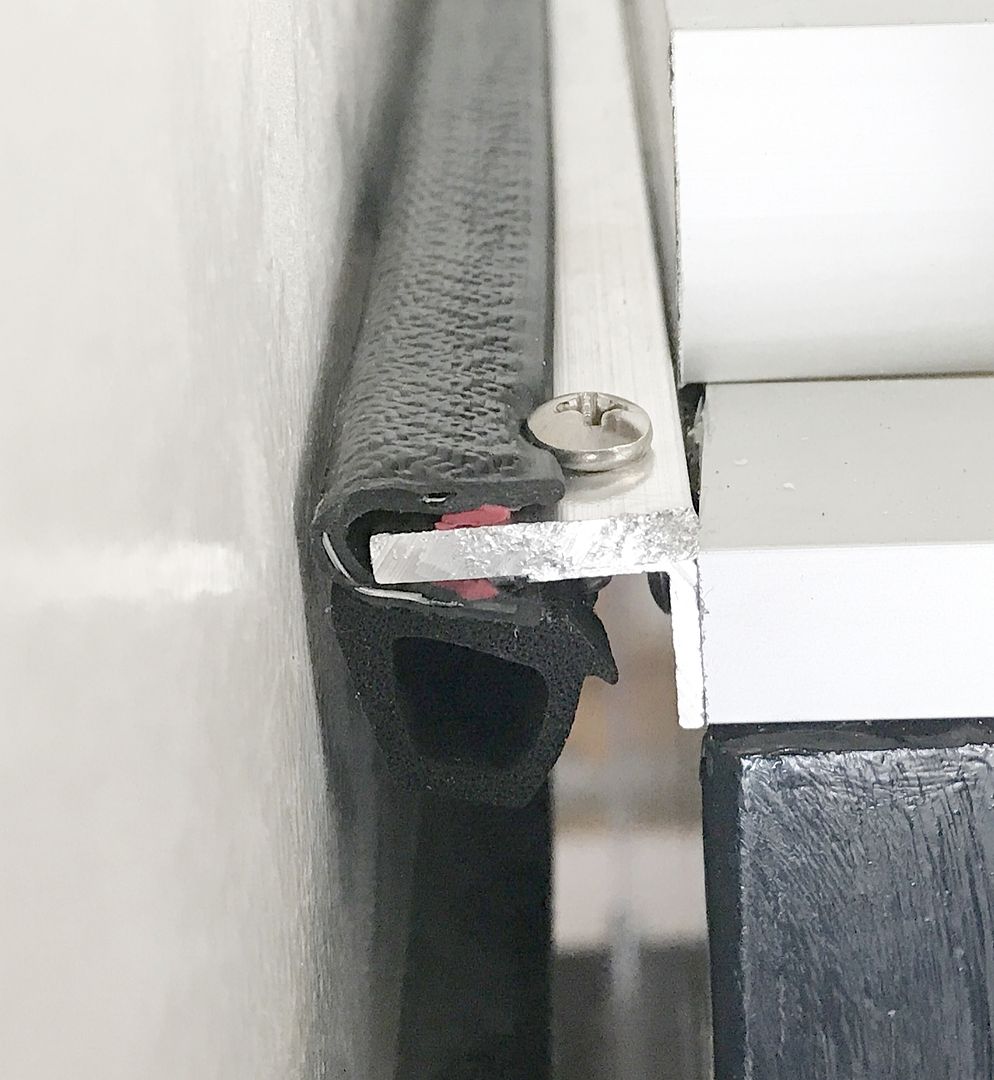
I had several spots where the seal was not at all complete (this is looking down at a corner)

and the aluminum did an all too efficient job of radiating cold into the camper. And maybe worst of all, at night, the light coming through all the cracks attracts bugs and they then easily find their way in to the camper. Needs to be fixed.
I was using brush seals where there is a bigger gap between the camper and slide up (to clear the inside of the windows). The old setup is on the left and the new brush seal I found is on the right.

The old brush did a decent job of stopping drafts and bugs, but did little to keep cold out or heat in. And given how stiff the bristles are, it did not slide along the walls well so there had to be a small gap. The new seal is an adhesive-backed brush seal I found on Amazon. I chose the 15mm brush length. Since the gap between the slide-up and camper is 1-1/4" (for the most part), I stuck the seal to 1/2" X 3/4" wood strips, which were painted white (see above). Here's the before/after for another corner:
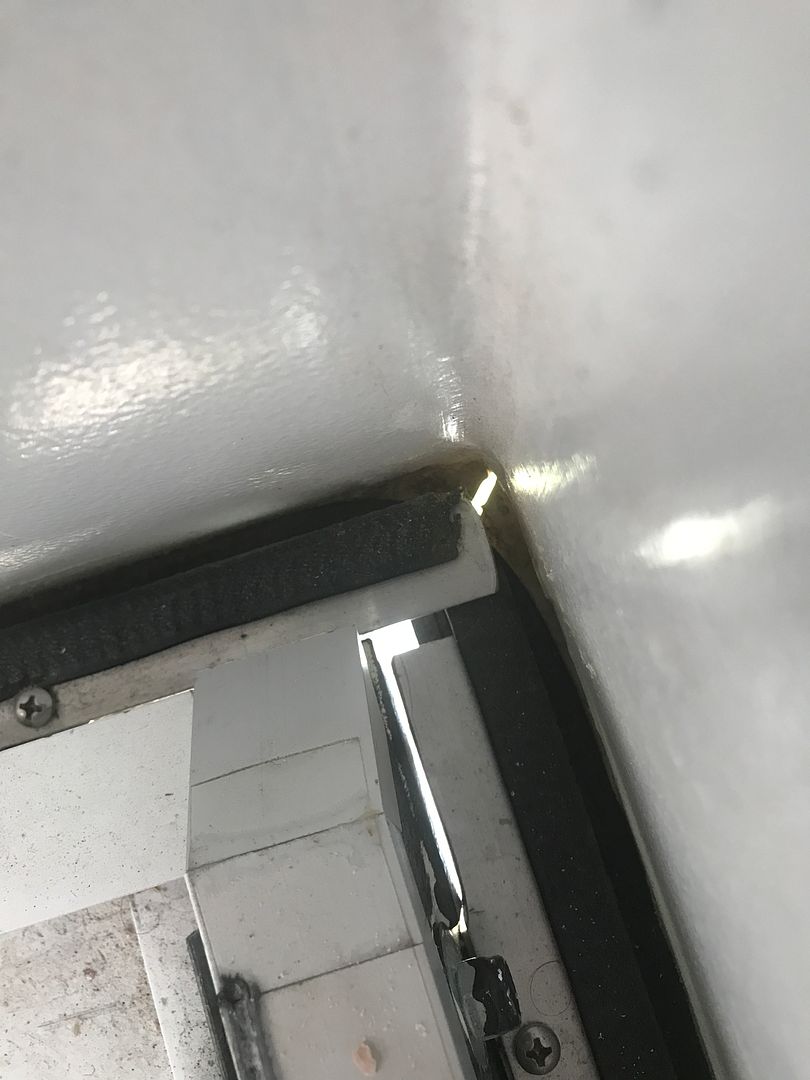
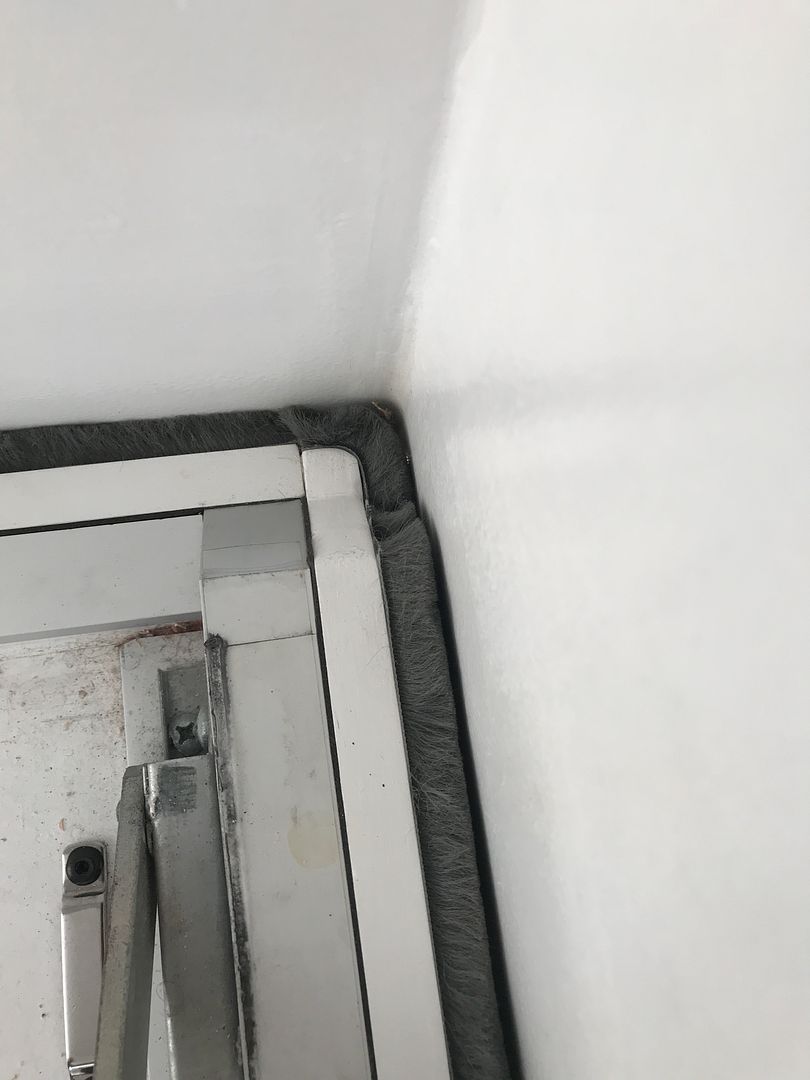
The adhesive on the seal said 3M and in some tests, it does seem to stick pretty darn well. Just in case, I used small screws at the ends of each section to back up the adhesive. I used VHB double-backed tape to adhere the wood strips to the aluminum trim. Here's another section along the back wall
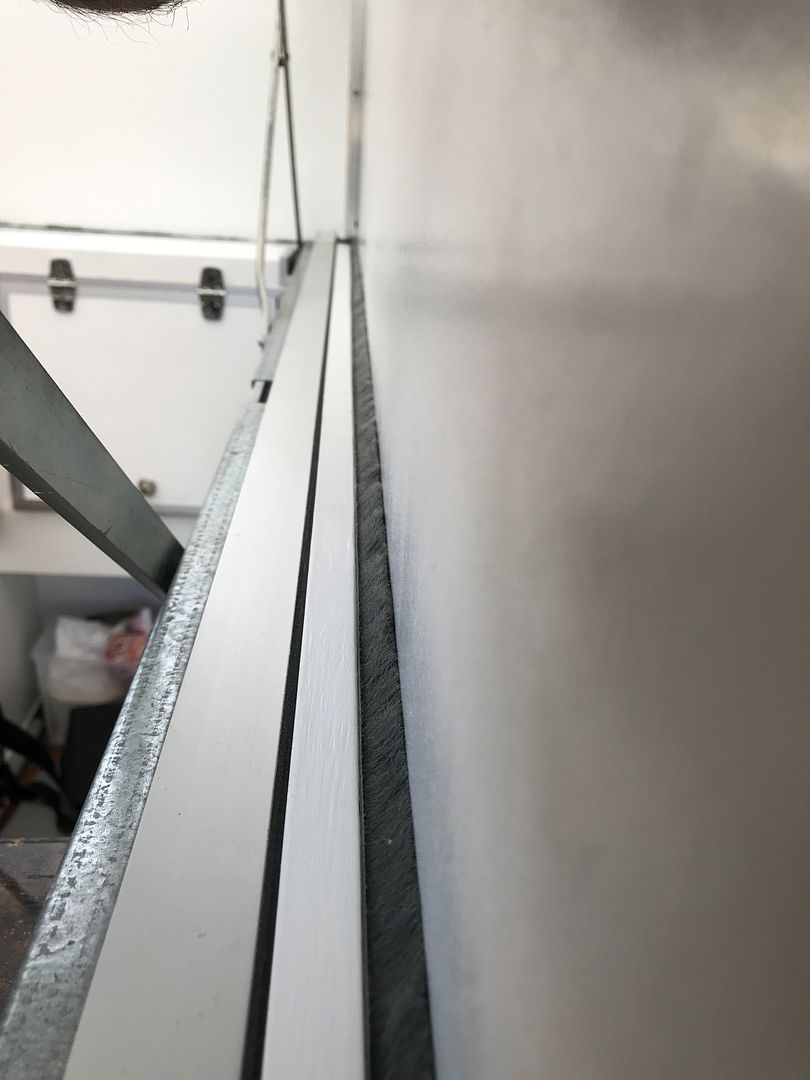
I let the adhesives set up for 24 hours or so and gave it a test run up and down. To my relief, all the pieces stayed in place. The result is a much, much better seal. Barely any light visible now coming through. I expect it will allow a lot less cold and wind in as well. Good upgrade and way overdue!
The last trip reminded me of the need to do a better seal between the slide-up and main camper. The existing setup with bulb seals (the bulb meets the black lip below when the slide-up is all the way up)

I had several spots where the seal was not at all complete (this is looking down at a corner)

and the aluminum did an all too efficient job of radiating cold into the camper. And maybe worst of all, at night, the light coming through all the cracks attracts bugs and they then easily find their way in to the camper. Needs to be fixed.
I was using brush seals where there is a bigger gap between the camper and slide up (to clear the inside of the windows). The old setup is on the left and the new brush seal I found is on the right.

The old brush did a decent job of stopping drafts and bugs, but did little to keep cold out or heat in. And given how stiff the bristles are, it did not slide along the walls well so there had to be a small gap. The new seal is an adhesive-backed brush seal I found on Amazon. I chose the 15mm brush length. Since the gap between the slide-up and camper is 1-1/4" (for the most part), I stuck the seal to 1/2" X 3/4" wood strips, which were painted white (see above). Here's the before/after for another corner:


The adhesive on the seal said 3M and in some tests, it does seem to stick pretty darn well. Just in case, I used small screws at the ends of each section to back up the adhesive. I used VHB double-backed tape to adhere the wood strips to the aluminum trim. Here's another section along the back wall

I let the adhesives set up for 24 hours or so and gave it a test run up and down. To my relief, all the pieces stayed in place. The result is a much, much better seal. Barely any light visible now coming through. I expect it will allow a lot less cold and wind in as well. Good upgrade and way overdue!
Similar threads
- Replies
- 27
- Views
- 1K
- Replies
- 0
- Views
- 426
- Replies
- 0
- Views
- 357
- Replies
- 18
- Views
- 2K
